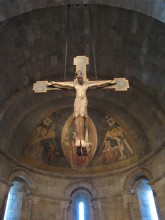Italians, like many other countries, have symbols that are often associated with different themes. Often, these are used to inspire attributes like passion and strength. Symbols for strength might range from examples like the Lion that represents Saint Mark, patron saint of Venice through to the wolf and eagle that appear on many Italian emblems. Universal symbols like that of the 'heart' or cuore have been used to represent passion in Italian works of art, and il sacro cuore or 'the sacred heart' is a Catholic symbol of devotion and the love of God.
Patriotic Italian Symbols

The simboli patri or patriotic symbols of Italy are often based on the theme of the Italian Republic, The historic reign of Italy, and in some cases refer to the concept of the 'ideal Italian' that was developed during the Renaissance.
Examples of this type of symbol are common in military insignia, as well as anything to do with the nation as a whole, ranging from national sports teams through to the Italian association of oncologists.
The national flag of Italy, the tricolore, is made up of green, white and red vertical bands and is featured in many patriotic symbols.
The star, sometimes inside a wreath, is another popular symbol of the Italian state, with one example being the emblem of the Italian republic known as the stellone, which was decreed into existence in 1948, following WWII.
The flame, or la fiamma, is another Italian symbol that represents passion and pride for the state, and is notable for featuring in various military uniforms, such as the cap worn by the Carabineiri, a militarized division of Italy's police force.
Christian Symbols
Seeing as the Vatican City, in Rome, is the seat of the Catholic church, it makes sense that many Italians associate strength and passion with the various symbols related to their faith. Obvious examples like the crucifix, and its many forms, are immediately associated with the 'passion' of Christ- a theological term used to refer to the mental, physical and spiritual suffering endured by Christ during his trial and execution, although it is interesting to note that this use of the word passion derives from the Greek word paschō which means suffering.

